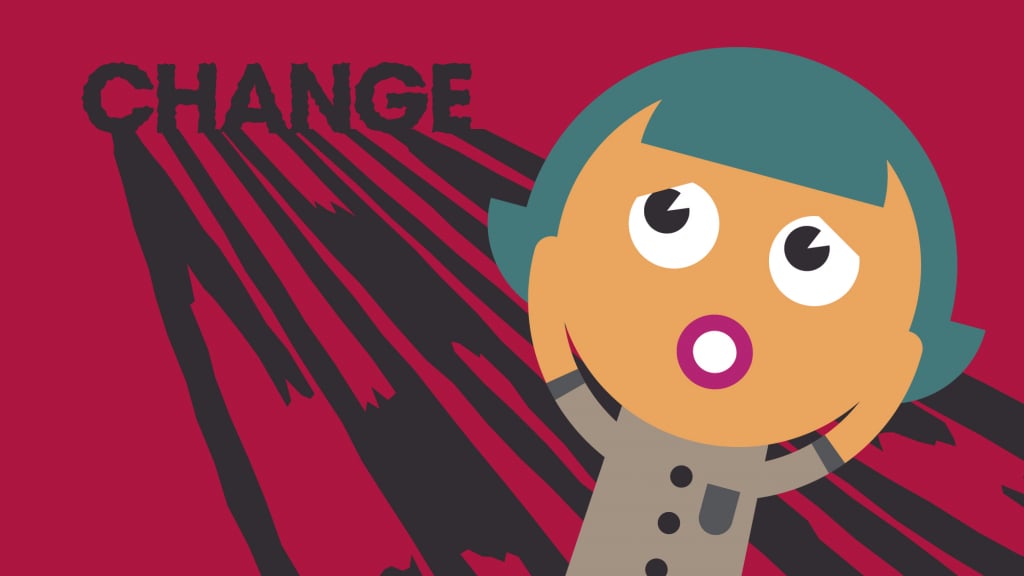Why most change happens too slowly, and what to do about it
By Mark Vincent
Share

Just recently, we’ve heard headlines about Maplin, Toys R Us, Next, Mothercare, even House of Fraser and more. And yet it’s hard to point to specific trends that would suggest we are spending less. It’s clear though that we are spending and behaving differently and established retailers are seemingly unable to keep up. So why aren’t they adapting quickly enough?
If you’ve ever tried making change in any organisation you may recognise how challenging it can feel. Even getting funding approval for change can be so problematic and time consuming it can make us wonder if it’s worth the effort. It can also be tempting to cling to old business models and thinking because it’s easier, not recognising the subtle changes that are happening around us till it’s too late.
We are all great at change
Yet, when the situation demands it, people and organisations can make big changes very quickly. Rapid response activity during the 2017 hurricane season demonstrates just how efficiently new infrastructures can be established when people need to leave their homes in a hurry. Massive change achieved in just a few days.
The risk to human life rightly creates an unprecedented level of urgency. These subtle changes in retail can be either ignored or explained away with a graph or a PR spin. And yet, while lives aren’t at risk in the case of these companies, many livelihoods certainly are. What’s missing here though is the recognition of what’s going to happen (till it’s too late) and the urgency to do something about it. So how do we offset that?
An outward facing culture encourages innovation
Two enemies of change are complacency and apathy. They are symptoms of an inward facing organisational culture and many (I’ll argue most) businesses are afflicted in some way. Paradoxically, there is plenty of research showing that the more successful an organisation becomes, and the larger it grows, the more likely it will develop characteristics that hinder or slow down change.
the more successful an organisation becomes, and the larger it grows, the more likely it will develop characteristics that hinder or slow down change
Some large organisations are successfully creating agile and innovative cultures, consider Spotify, WL Gore and even Microsoft recently. If you are finding that making change is challenging in your organisation, consider the following:
Stay close to the action and really understand your customers
Frontline employees – the people interacting daily with your customers – will provide valuable anecdotal feedback from the outside world. Encouraging their perspective on customer demands, attitudes and opinions of your products and services vs other options can reveal interesting insights. You won’t necessarily hear what you want to hear, but you will almost certainly hear what you need to hear. And it’s important to listen.
Show, don’t tell and engage emotionally
It’s all very well sharing data about customer opinion or competitor activity with staff but in our experience engaging people at an emotional level is far more likely to generate momentum. And when it comes to encouraging an outward focus, allowing staff to see for themselves has a far greater impact than telling them in a PowerPoint presentation.
Consider the recent videos from the BBC and others on plastics in the oceans and how that has created a movement and a force for change. Our response to this tends to be emotional and that is where the drive to take action really comes from; small steps for now maybe, but over time change happens.
Honesty is the best policy
It can be tempting to only share news about business success and shield staff from less favourable updates; we see that often in big businesses. Bad news hits share prices so why would anyone do that? This isn’t reality though and ends up creating a long-term situation that’s far worse, ultimate business failure that appears to come from nowhere. Shall I mention Carillion at this point?
A word of caution though: a sense of urgency is one thing, allowing that to turn into fear or anxiety is something quite different. The latter will undermine everything positive.
Developing and nurturing an outward facing, open and communicative culture allows staff feel in control of their destiny. In our experience, once that happens then innovation and agility is a natural consequence. And that may prove very useful in rapidly changing times.
Get in touch
If you’re starting a change, or already on the journey and need some support, we can help.
Whether it’s coaching or mentoring your leadership team, diagnosing low engagement or leading a change on your behalf, we have a range of options to suit different situations and budgets. Contact us by clicking the button to find out more.
Related content
The Intricacies of Strategic Misrepresentation in Project Management
Uncover the complexities of Strategic Misrepresentation in the project management community and how understanding the psychology behind it can pave the way for more successful projects.
Change Resistance: How do you know unless you look?
Change resistance can be costly in time and money and increases stress for all concerned. It comes from a lack of emotional connection and the key to addressing it starts with measurement.
How to ease the pain of change
This year has certainly been an emotional roller-coaster for many of us. When a change is thrust upon us it may be useful to understand that the emotions we’re feeling follow a pattern and that pattern is similar for most of us
How do you feel your change is going?
– Constantly adding more budget and it’s starting to feel like a money pit?
– Feeling that the changes seem to take much longer than hoped?
– Not getting tangible results quickly enough?
– Finding that no matter how hard you push, you’re still not getting there?
Would you like to understand what’s really happening and how to fix it?
Patrick Lencioni: The Five Dysfunctions of a Team
When a team is functioning well it’s obvious, both to the team itself and to those around it. There’s a clear buzz and things get done, quickly and seemingly with less effort. So how can we create this? Patrick Lencioni uses a story format to highlight some of the behaviours that ban work against successful teams. Like many things in life it seems so obvious, except when it isn’t.
The Great Relationships Reset
The Coronavirus pandemic changed the way we interact, with reduced face-to-face interaction, increased online connection and working from home. Many of these changes are becoming permanent and in turn, we all need to review…







